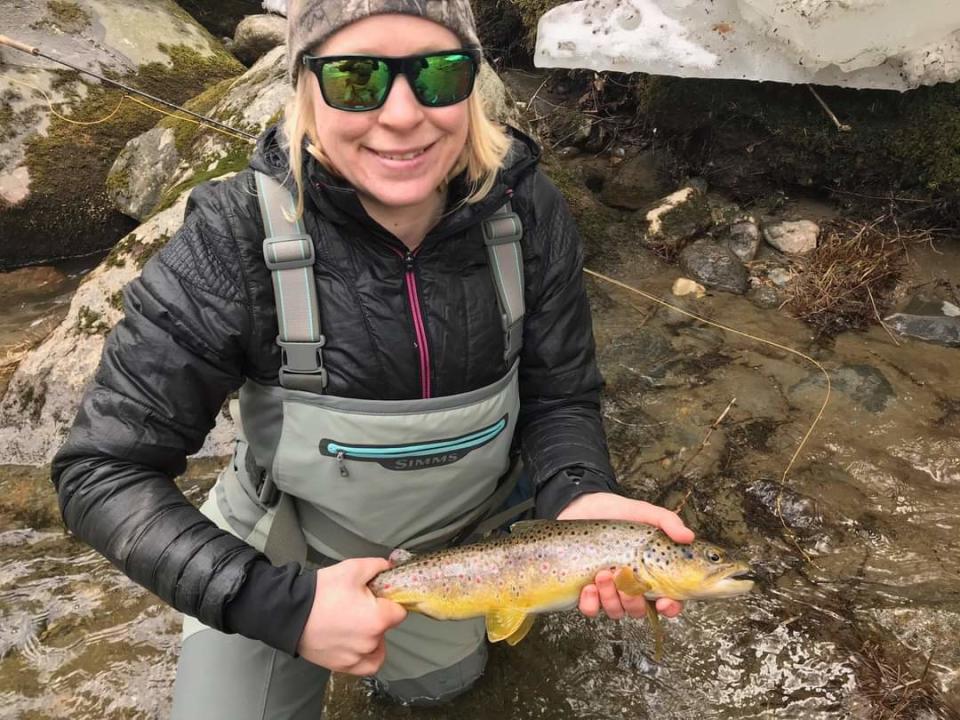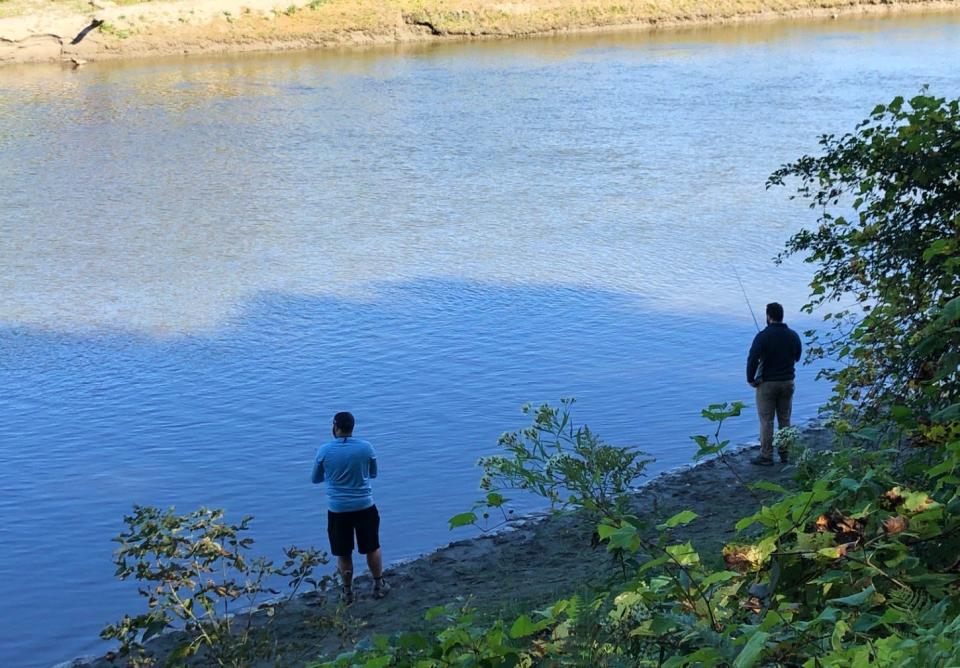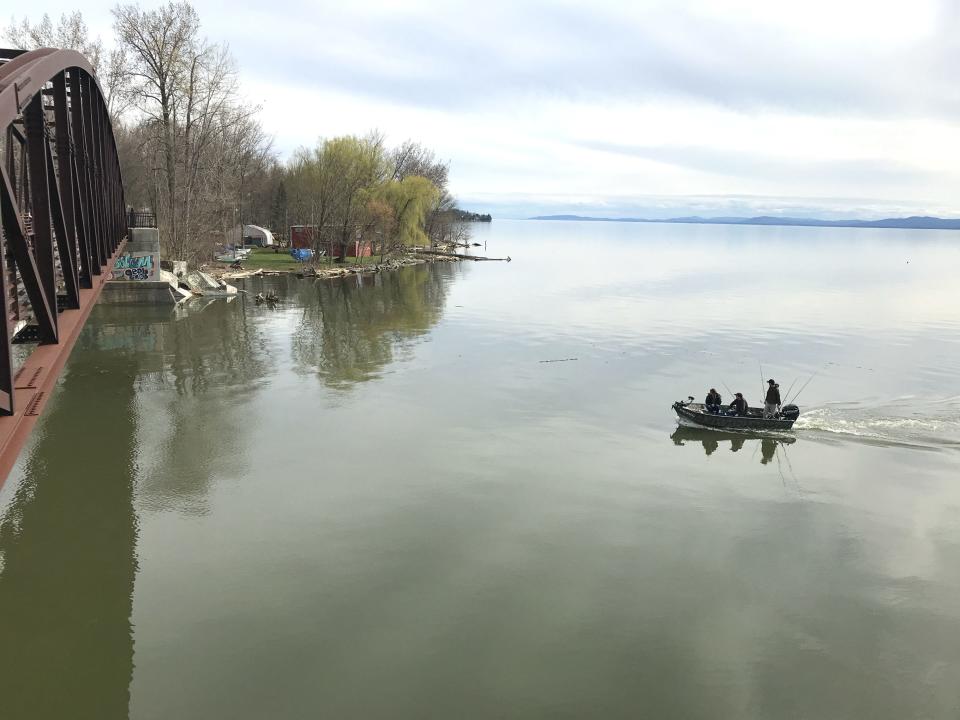Warmer waters in Vermont's rivers mean adjusting fishing habits
Hot water fishing advisories have become increasingly common in western states and the Rocky Mountain area. Although Vermont has yet to announce such advisories, its waters, too, are feeling the heat.
Local angler and employee at Stowe's Fly Rod Shop, Stephanie Olsen, sees fishing as a way to understand and connect with the environment. Olsen's relationship with the river allows her to note even the tiniest details, like changes in water temperature. Recently, she has noticed Vermont's rivers getting warmer.
“The science behind it is so awesome," she said. "You are thinking about the insects in the river, and about what the fish are feeding on, and the season, and water temperature. It makes you feel connected to the river.”
If river temperatures continue to rise, Olsen suspects that anglers may have to adjust their fishing habits.

Vermont's rivers are getting warmer
The Fly Rod Shop, a retail and fishing guide service store in Stowe, releases weekly river reports, updating patrons on the temperature and conditions of Vermont’s most popular rivers. In May 2019, the Winooski River saw temperatures averaging around the mid-40s. This year, those numbers have increased to the mid-50s and mid-60s.
Parker Wright, another employee at The Fly Rod Shop, said that recent temperatures have not been typical.
“The rivers’ water temperatures have warmed up far quicker than they normally do just from the lack of rain and the fact that it's 94 degrees out right now,” he said about last Thursday's warm weather.
The National Weather Service forecasts Vermont will see above-normal temperatures compared to previous decades this summer. A state assessment noted that the 2-degree rise in Vermont's average temperatures in the last century may lead to warmer winters and increased precipitation, both of which impact Vermont lakes and rivers.
Extreme rain, droughts, and mild winters all impact Vermont's rivers
Michele Braun, executive director of the Friend of the Winooski River organization, explained what these changes mean regarding Vermont rivers.
“We're seeing bigger rainstorms,” Braun said. “When there is a lot of rain falling heavily and quickly, with nothing to slow it down like shrubs and trees that would normally be in the landscape, it arrives at the river all at once, very quickly and with a lot of energy. The rush carries a lot of pollution and causes streams to erode to an unnatural degree.”

While gradual erosion is a natural process, Braun suspects that human activity, such as impervious surfaces like roofs and driveways or replacing shrubs and trees with large grass lawns, all makes rainfall move faster. The increase in the velocity of water worsens the erosion and pollution of rivers.
“Unnatural erosion causes sediment to fill in what should be a rocky stream bed, making for an inhospitable environment for aquatic insects that fish like to eat or for fish to lay their eggs,” Braun said. On the opposite side of the scale, Braun noted that Vermont has also experienced a series of droughts.
"After a really hot and dry spring, water levels will be lower," she said.
Wright too has noticed a quicker and dryer transition from winter to summer.
"Usually, the second half of April to the month of May is a little bit on the cooler side, we'd see more rain. But, for whatever reason, that doesn't seem to be occurring as often in the past 10 years," Wright said.
A mild winter also has an impact on the rivers.
“Having less snowpack will result in both groundwater and surface water levels being lower," Braun said, "less snow melting also means there will be less cold groundwater to help keep the Winooski and its tributaries cool.
Simply put, these changes are not good, said Paul Bugerja, the chair of the Native Fish Coalition Vermont Chapter. “Warmer weather affecting fish, not good. Silt in the stream, not good. Adverse weather affecting the streams, not good.”
How might Vermont's anglers be impacted?
Typically, anglers fish in larger rivers, such as the Winooski River from mid-May through mid to late June. By late June the river's waters have warmed enough for anglers to migrate to smaller, cooler streams. Then, by the end of August or early September, the bigger river's waters return to a temperature more appropriate for fishing.
“With the hotter weather and stream temperatures being really high, the water is much warmer than it should be,” Braun said. "Fish may be impacted by warming waters."
As explained by Joshua Morse, Vermont Fish, and Wildlife Department public information officer, trout are adapted to cold and oxygen-rich water. They tend to prefer water temperatures in the upper 50s to the mid-60s. In warmer waters, trout must exert more energy to run their metabolism.

In July 2020, Vermont Fish and Wildlife Department published a press release encouraging anglers to consider the effect of hot weather on trout when fishing. The press release was in response to the high temperature and low flow rate of Vermont’s streams and rivers that summer.
Anglers were advised to avoid catch-and-release fishing for stream trout when temperatures exceed 70° as the risk of accidentally killing fish after release is increased. Alternatively, anglers were recommended to seek warm water species like bass and pike or to fish at cooler times of the day.
Anglers will have to adapt if the waters continue to warm
Olsen said it is important for anglers to consider the temperature of the water.
“There are some decisions for me to make ethically," Olsen said. "If the water is too warm to go for trout, I will start looking at going for bass so that I am not stressing out trout species. It is really thinking about what is best for the fish and what fish can live in those warmer waters.”
Wright said he suspects that if warmer summers continue, anglers may transition to fishing on bigger rivers earlier in the season.
“We just have to adjust our techniques and the kind of water we're fishing in because if the water is going to be 72 degrees on June 1st, we're not going to be fishing,” Wright said.
This article originally appeared on Burlington Free Press: Warmer waters impact fishing on Vermont's rivers

